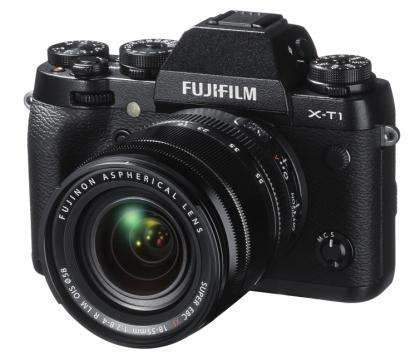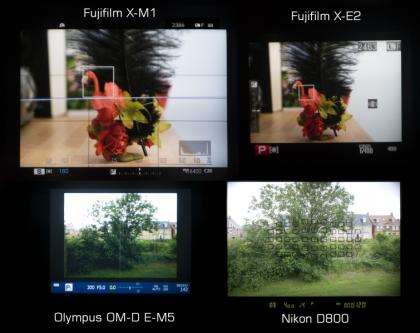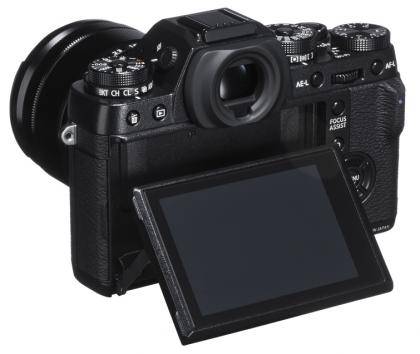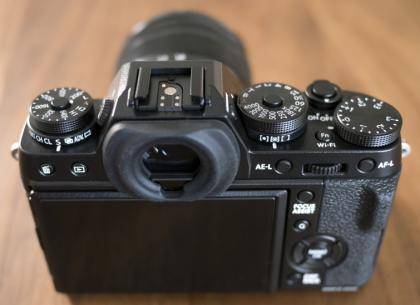Price, specs and rating for body-only package
With the X-T1, Fujifilm's engineers have gone all out to make the best ever compact system camera (CSC). By and large, they've succeeded.
The external design is a triumph of both form and function. The weather-sealed magnesium alloy body has a rubber-like texture, and the contours on the front and rear give a secure grip for what is a small but surprisingly heavy camera, at 745g with the 18-55mm lens attached.

The 3in screen tilts up and down and has a crisp 1-million dot resolution. However, it's the electronic viewfinder (EVF) that steals the show. Its 2.36-million dot (1,024x768) resolution matches the highest we've seen, while its 0.77x magnification is truly enormous, dwarfing the 0.7x EVFs on rival cameras that we previously thought of as being pretty big.

The X-T1's viewfinder is the biggest we've seen, including full-frame SLRs such as the Nikon D800
Fujifilm kick-started the recent trend for retro, dial-laden cameras, but the X-T1 takes this to new heights. There are dials on the top plate for shutter speed, ISO speed and exposure compensation, while aperture is available on a ring on many X-Mount lenses. The 18-55mm lens we tested doesn't have an aperture readout – instead, it's relayed on the screen and EVF – but there's a switch on the lens barrel to toggle between automatic and manual aperture. The shutter and ISO speed dials also have Auto settings, which means there's no need for a mode dial. If you want shutter priority, just turn the shutter speed dial from Auto to set its value. It's also possible to have shutter-and-aperture priority, with automatic exposure handled by the Auto ISO speed and informed by the exposure compensation dial.

It's a bit odd that the ISO speed dial goes up to 6400, H1 (ISO 12800) and H2 (ISO 25600), but the camera actually supports an ISO 51200 mode. It's only available by reassigning the H1 and/or H2 settings in the Setup menu. Presumably the top ISO speed was decided on after the dial design had been finalised. On a similar note, the X-T1 continues it X-series siblings' slightly frustrating inability to shoot RAW beyond ISO 6400 – the higher speeds are for JPEG only. Another frustration is that the Auto ISO setting uses a fixed minimum shutter speed. It can be set to anything from 1/4 to 1/500 seconds, but there's no option to vary it dynamically according to the focal length or detected subject motion. It's not a massive problem, but it does mean that this camera will produce the best results in the hands of someone who shoots manual exposures or who is willing to keep a close eye on the automatic settings.

There's a three-way switch for metering mode tucked in below the shutter speed dial, and another seven-position switch for drive mode below the ISO speed dial. With so many rotary controls, the dual command dials seem rather redundant, but they'll come in useful for lenses that lack aperture rings, and for adjusting menu-based settings.
